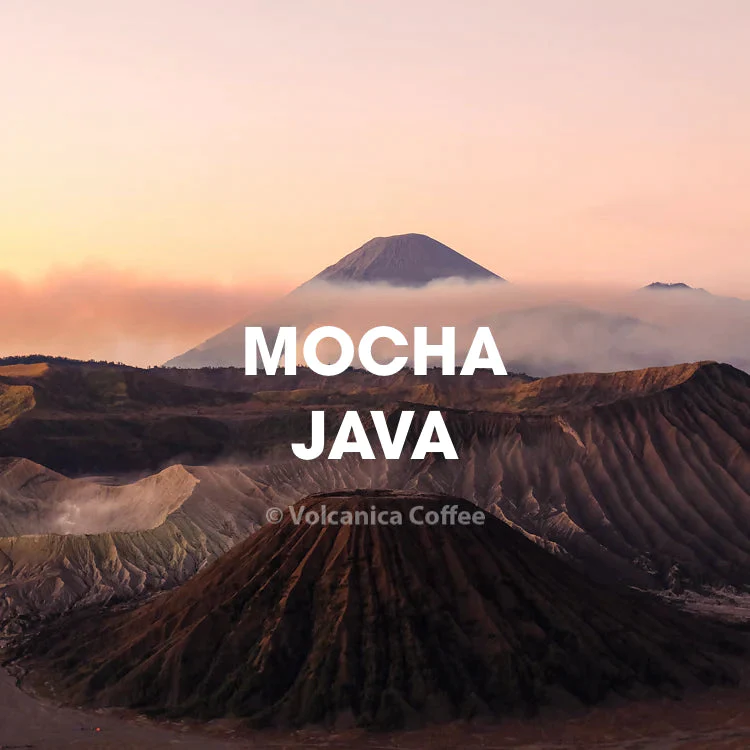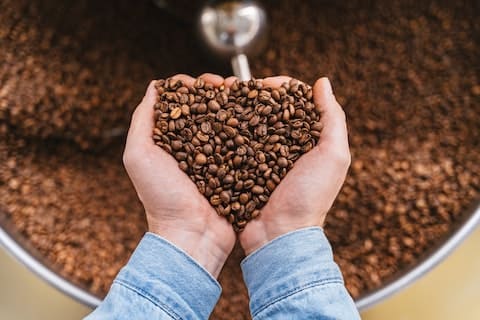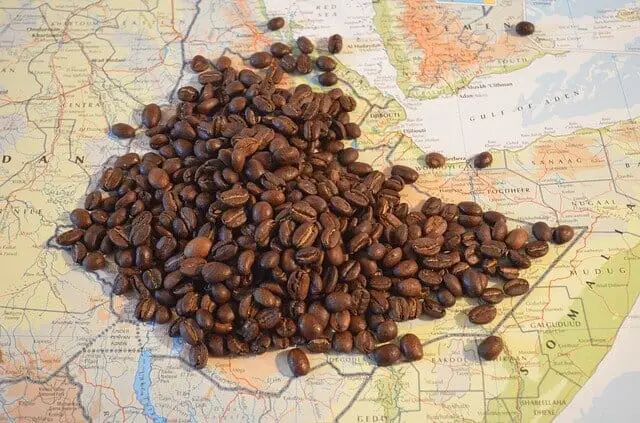As an Amazon Associate I earn from qualifying purchases. When you use our links, we may earn an affiliate commission. Learn more.
Coffee consistently ranks among the top three most consumed beverages worldwide. Available in various forms, true connoisseurs are specific about the kind of coffee they prefer.
One of the world’s oldest and most renowned coffee blends is Mocha Java, a multicultural mix of Java Arabica beans from Indonesia and Mocha beans from Yemen.
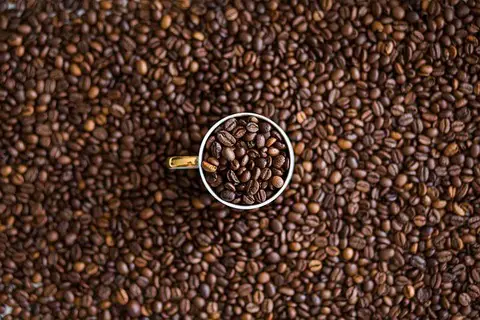
Mocha Java Coffee History
The Mocha Java blend originated in the 17th century from the historical connection between Yemen and Indonesia. The Yemeni port city of Mocha was a significant stop for ships traveling between Indonesia and Europe.
Sailors returning to Europe combined the beans from Java Island, Indonesia, with Yemeni Mocha beans, creating this iconic blend.
Contrary to popular belief, the Mocha bean’s chocolate-like bittersweet taste does not result from added chocolate. Some argue that the chocolate coffee mixture is named Mocha to honor the beloved Mocha Java coffee.
Traditional Mocha Java consisted of a mix of Java and Mocha beans.

However, modern versions often include more readily accessible coffees like Ethiopian and Sumatran. Original Mocha Java blends are now challenging to find and relatively expensive. The modern blends provide a more affordable option for coffee lovers.
Though the old Yemeni port of Mocha has been damaged, its legacy lives on through the blend of African and Indonesian coffees that create a delicious and balanced beverage.
Food Pairing
Mocha Java’s unique and balanced flavor profile allows it to pair well with various food items. Consider the following combinations for a delightful culinary experience:
- For a fruity and bright taste of African beans: Blueberry Coffee Cake and Glazed Lemon Cake Bars
- For an earthy, herbal flavor of Sumatran beans: Banana Bread
- For savory pairings: Persian Kuku Sabzi
This free cheat sheet will improve your coffee brew by providing quick information on brew ratio, grind size, optimal brewing time, and more.
Mocha Java Flavor Profile
Mocha Java combines a diverse mix of textures and flavors, featuring fruity and bright African coffees alongside earthy, rich beans from Indonesia.
This blend results in a drink with citrus, intense berry flavors, and an herbal, gamey taste.
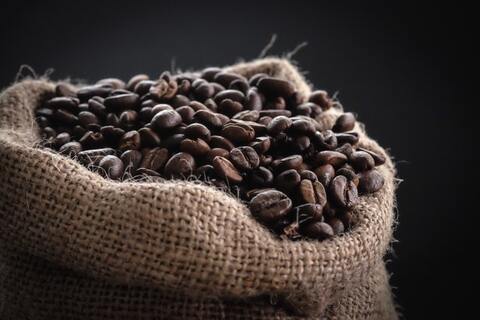
The bright and clean acidity of African beans complements the syrupy quality of Indonesian beans, creating a unique taste experience enjoyable as a regular espresso beverage.
Commercial Mocha Java blends substitute the original Java Arabica and Yemen Mocha beans with more delicate coffees like Ethiopian Harrar or other bright, high-acidity coffees.
Proportions are adjusted to mimic the classic Mocha Java flavor.
Purchasing Mocha Java
Roasters mix coffees from different origins to preserve the original Mocha Java flavor, even when beans are unavailable due to trade barriers or regional conflicts.
However, sourcing coffee from Yemen is difficult because of political unrest, so most Mocha Java blends contain single-origin beans.
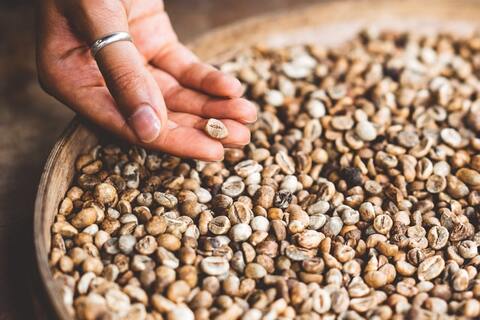
The quality of Mocha Java coffee varies among roasters, depending on their desired taste profile. When purchasing Mocha Java, ensure you’re getting freshly roasted whole beans.
Mocha Java Espresso
Mocha Java’s distinct and balanced taste makes it ideal for an espresso roast. The blend’s characteristics shine in a dark roast.
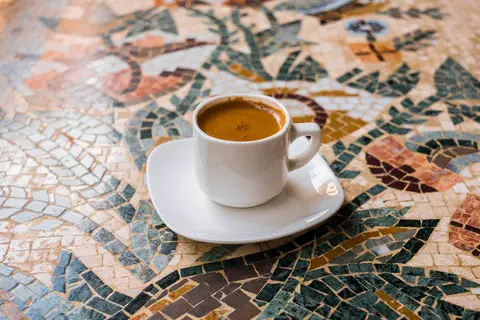
Experienced roasters may include Robusta beans in their espresso mixtures to enhance crema and caffeine content, improving the coffee flavor.
Best Mocha Java Coffee Beans
Our recommendation for the best Mocha Java beans is Volcanica Coffee Company. This coffee is available in a 16oz pack, 3lbs three-pack, and a 5lbs pack. If you choose a 5lbs bag, you will save 5%. You can decide to have a one-time buy or subscribe to save 10%.
You can get Mocha Java coffee from Volcanica in either whole bean, drip grind, French press, or espresso grind. This mixture is unique in its smooth body, complex spiciness, sweet chocolate overtones, and notes of tangerine.
Volcanica makes authentic Mocha Java using real Java and Yemen beans.
Volcanica company's inspiration came from several trips from Costa Rica, where they continually enjoyed coffee that had fantastic taste.
Back in the US, most people were unaware that coffee could offer an exotic experience. As a result, Volcanica Coffee started to bring high-quality single-origin coffees, which consumers well received.
Volcanica's unique coffee roaster is dedicated to exotic coffees, delivering fine coffee. They source their coffee from the best volcanic regions with mineral-rich soil; hence, they get coffee that has a remarkable taste and is wonderfully aromatic.
- 100% authentic Mocha Java coffee
- Kosher certified
- World's oldest and most famous blend
- It May not suit everybody's taste profile
Mocha Java Recipe You Can Make At Home
You can make a great cup of Mocha Java yourself in your home. Moreover, this can also be the best beverage to serve your guest. I have provided a step-by-step process for a Mocha Java recipe you can make at home 🙂

How To Make Mocha Java At Home
Total Time: 15 minutes
Step 1 – Get a reliable espresso machine.
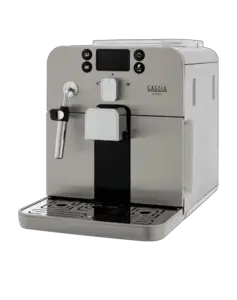
Start by getting a reliable espresso machine. You can go for a coffee brewer, which can be used as an espresso, a cappuccino, or a latte machine. With this machine, you will be able to brew different flavors of Java. You should read our best espresso machine reviews first and check people’s experience with the espresso machine.
Step 2 – Buy Mocha Java coffee beans.
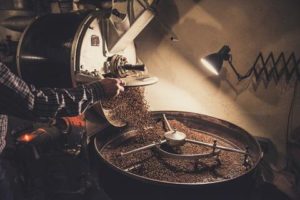
Buy the best Mocha Java blend from Volcanica Coffee Company. You can get it online from their official site.
Step 3 – Grind the fresh coffee beans.
This step includes purchasing the coffee beans. Grinding fresh beans helps in improving coffee and the flavor you will get.
Step 4 – Brew the mocha java and pour it into a coffee cup.

Put the recommended measurement of the Mocha Java blend into the cup. However, you can change the measure to that which suits your preferences. After that, pour water inside a water reservoir.
Step 5 – Add milk (optional).
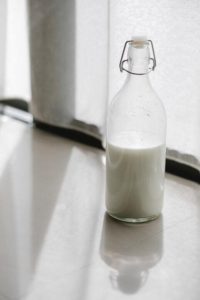
For those that will use milk, simmer it before adding it to make your coffee beverage extra hot. Those that don’t prefer using milk can skip this process.
Estimated Cost: 5 USD
Supply:
- Mocha Java beans
- Water
- Milk
Tools:
- Coffee machine
- Coffee cup
Storing Tips
Proper storage is essential to maintain the taste of your Mocha Java coffee. To preserve its flavor, follow these guidelines:
- Store coffee beans in an opaque, airtight container at room temperature, away from light and air exposure.
- Keep beans whole until it’s time to grind them.
- Use freshly roasted beans within ten days to prevent flavor dissipation.
- Store ground beans in a dry, dark place.
Different Kinds of Coffee
Various coffee plants exist, with Arabica being the most common variety, accounting for about 75% of the world’s coffee production.
Other types, such as Robusta, Liberica, and Excelsa, can supplement Arabica’s taste and vice versa.
Although Mocha and Java are Arabica beans, their distinct flavors result from their geographic origins. Blending beans from different regions can create unique flavors, but be cautious when choosing blends and seek expert recommendations if needed.
FAQ’s
Why is coffee called Java?
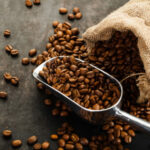
Java is a term often used to refer to coffee because it originates from the island of Java in Indonesia. This island has a rich history of coffee cultivation, and its beans have become synonymous with coffee over time. Java is also part of the well-known Mocha Java blend, which combines beans from Java and Mocha, a port in Yemen.
What does Mocha taste like?

Mocha coffee has a unique flavor profile, including bittersweet chocolate notes, fruity undertones, and a hint of earthiness. This chocolate-like taste is derived from the Mocha beans’ natural flavors rather than adding chocolate to the coffee. “Mocha” refers to the port in Yemen where these beans are sourced.
What does Java coffee taste like?

Java coffee is known for its bold, full-bodied flavor, low acidity, and syrupy consistency. The beans typically showcase earthy, herbal, and sometimes spicy notes. The taste of Java coffee can vary depending on the specific region within the island and the processing methods used, but its rich, robust profile generally characterizes it.
What is the difference between Java and Mocha?
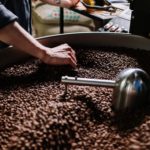
Java and Mocha refer to two distinct geographical locations and their respective coffee beans. Java is an island in Indonesia known for its bold, full-bodied coffee with earthy and herbal notes.
On the other hand, Mocha is a port city in Yemen, famous for its coffee beans with a unique bittersweet chocolate-like flavor and fruity undertones. The Mocha Java blend combines beans from both Java and Mocha, resulting in a well-balanced and complex coffee taste.
What type of coffee is Mocha Java?

Mocha Java is believed to be the world’s oldest coffee blend. It is made from the finest Arabica beans sourced from Yemen and Indonesia.
The word Mocha refers to the port in Yemen where the beans are sourced from, and Java refers to the main island in the Indonesian Archipelago where the Java beans are sourced.
Does Mocha Java have chocolate?

Mocha Java does not inherently contain chocolate. In this context, “Mocha” refers to the port city in Yemen where coffee beans are sourced. The Mocha beans have a natural chocolate-like taste, contributing to the misconception that Mocha Java contains chocolate.
The blend’s unique flavor profile combines Java beans’ earthy, full-bodied characteristics with Mocha beans’ fruity and bittersweet chocolate notes.
Conclusion
Mocha Java offers a balanced and complex taste suitable for an espresso roast. This timeless blend can be paired with various food options, making it a versatile and delightful coffee choice.
When purchasing Mocha Java, opt for reputable sources like Volcanica Coffee Company, which offers Kosher-certified blends with diverse flavor notes, including spices, chocolate, and tangerine.
This free cheat sheet will improve your coffee brew by providing quick information on brew ratio, grind size, optimal brewing time, and more.
